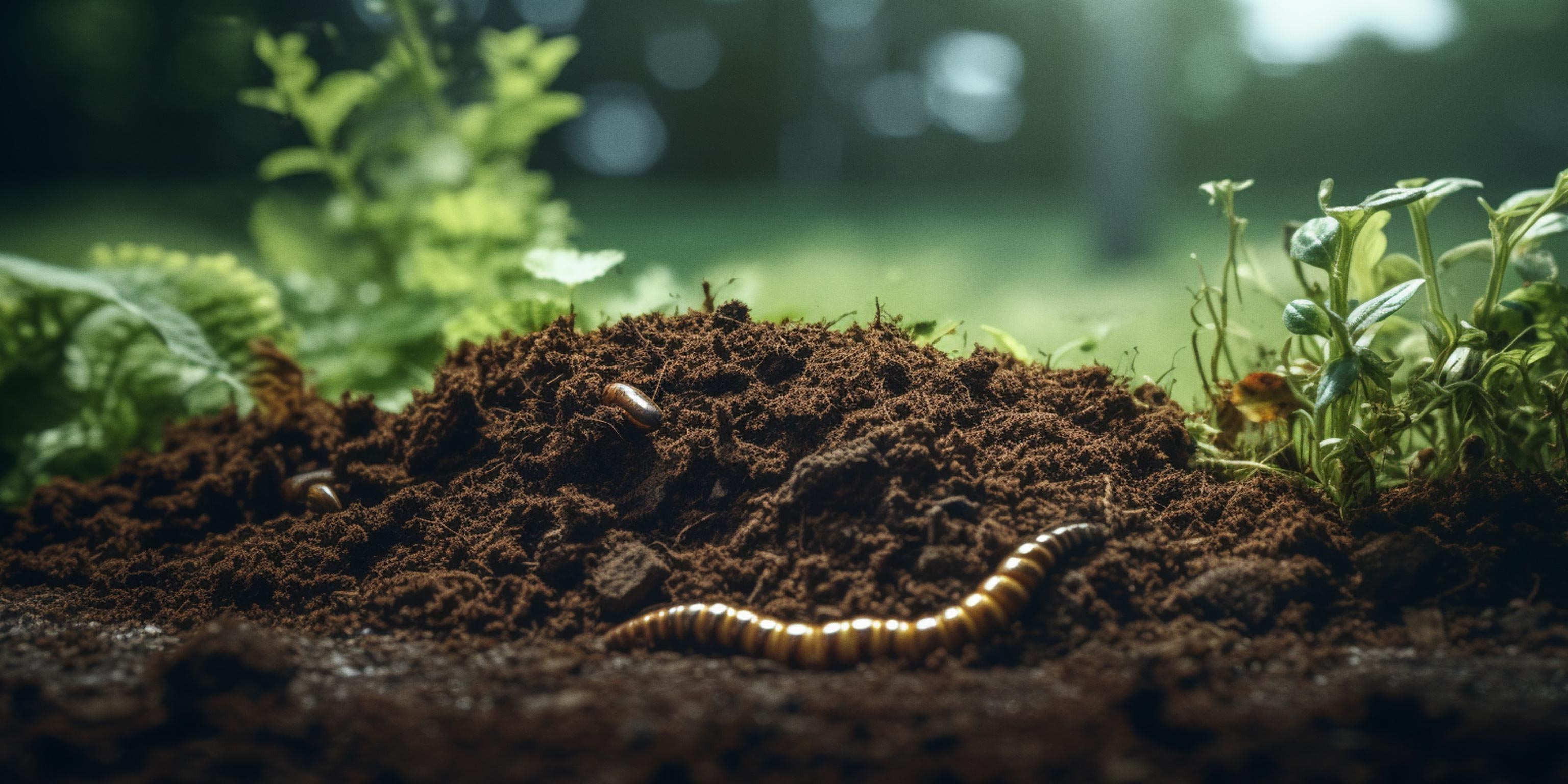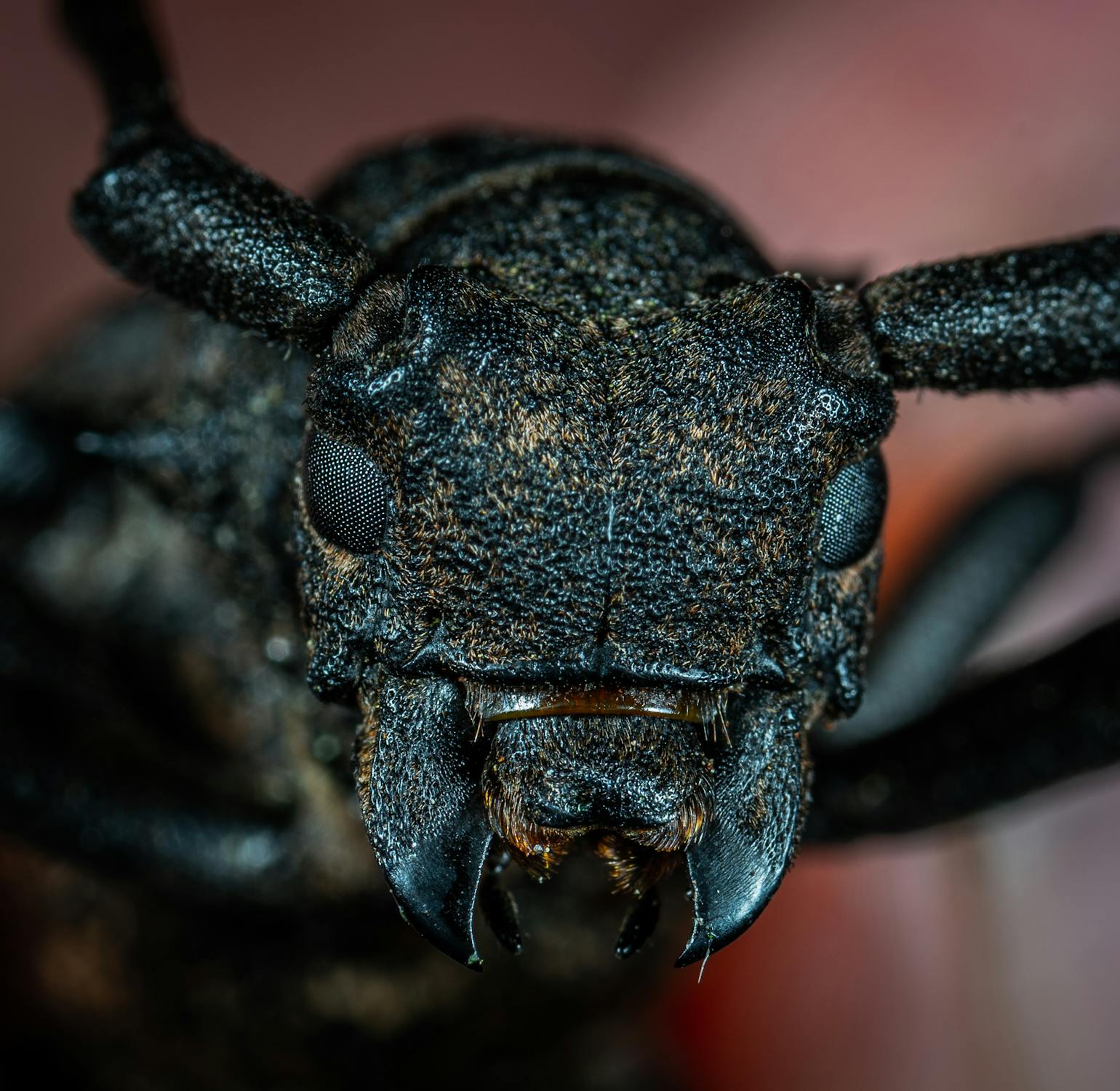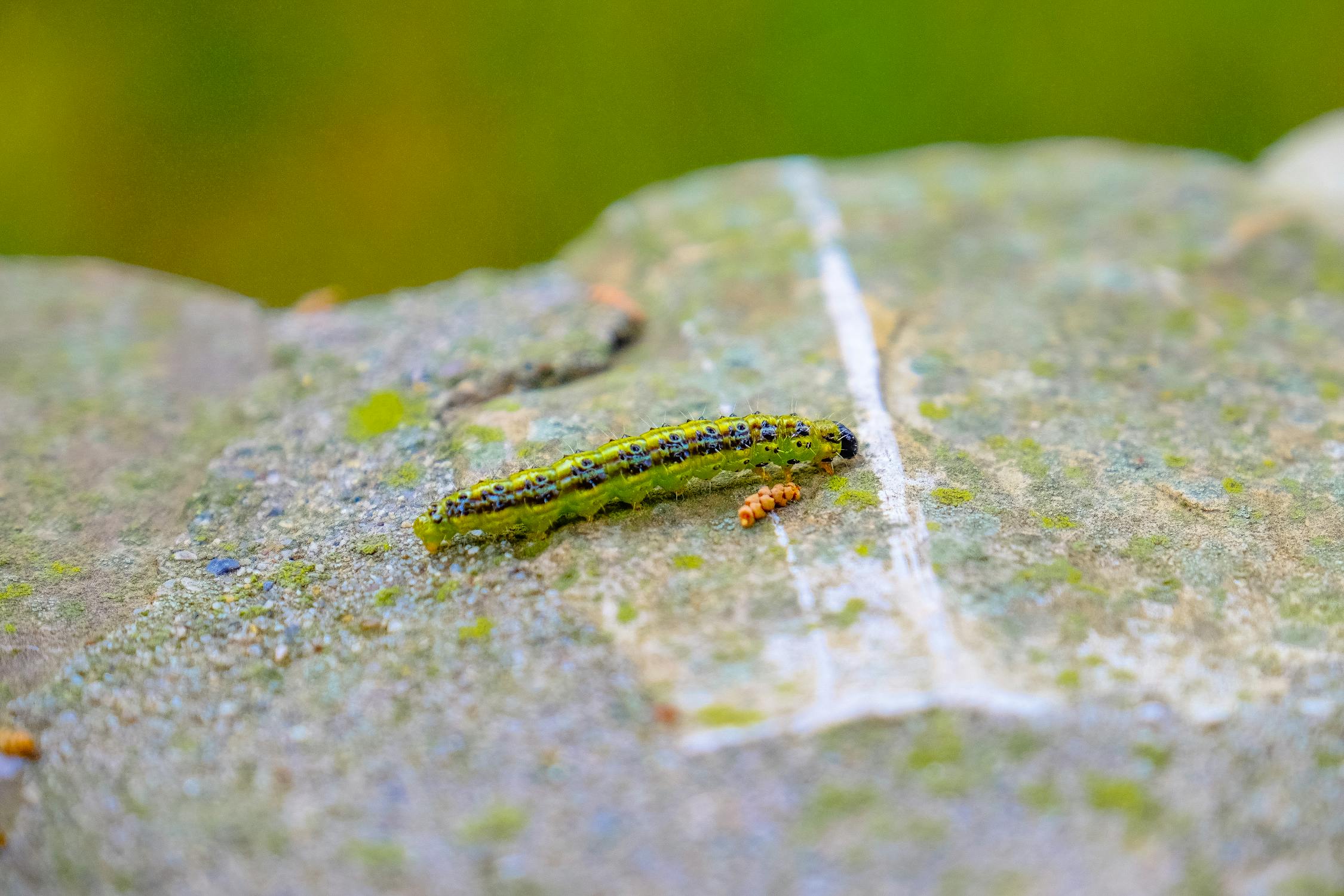
Dealing with Common Lawn Pests: Prevention, Identification, and Treatment
Published on September 18, 2023 by Harrison Wolfe
Dealing with common lawn pests can be a frustrating and time-consuming task for homeowners. Pests such as grubs, mosquitoes, and ants can wreak havoc on your lawn, turning it from a lush green oasis to a patchy, damaged mess. Fortunately, with the right knowledge and proactive measures, you can prevent, identify, and treat these pesky intruders effectively. In this blog post, we will delve into the world of lawn pests, equipping you with the necessary information to safeguard your lawn and maintain its health and beauty. From understanding the signs of an infestation to implementing targeted treatments, we will cover all aspects of pest management, empowering you to reclaim your outdoor space.
Understanding Common Lawn Pests
Having a lush and healthy lawn is the pride of every homeowner. However, it can be challenging to maintain its beauty when common lawn pests invade your green space. Understanding these pests and the importance of pest prevention is crucial for maintaining a thriving lawn. In this section, we will explore the significance of pest prevention and discuss some of the most common types of lawn pests you may encounter.
Importance of Pest Prevention
Preventing lawn pests is the first line of defense in maintaining a healthy and vibrant lawn. By implementing preventive measures, you can save yourself time, effort, and money in the long run. Here's why pest prevention is essential:
Preserving Lawn Health: Lawn pests can cause significant damage to grass, contributing to discoloration, thinning, and even death of the grass blades. By preventing pest infestations, you can protect the overall health of your lawn.
Cost-Effective Approach: Treating a lawn that is already infested with pests can be more costly and time-consuming than preventing the problem in the first place. Investing in pest prevention methods is a cost-effective approach to maintaining a pest-free lawn.
Reducing Chemical Usage: Pest prevention focuses on creating unfavorable conditions for pests rather than resorting to chemical treatments. By implementing proactive measures, you can minimize the need for chemical pesticides, creating a safer environment for your family, pets, and beneficial insects.
Common Types of Lawn Pests
When it comes to lawn pests, knowing your enemy is half the battle. Here are some of the most common types of pests you may encounter in your lawn:
Grubs: Grubs are the larvae of various beetles and can cause significant damage to lawns by feeding on grass roots. These creamy-white, C-shaped larvae can lead to brown patches and weakened turf, making them a common nuisance.
Chinch Bugs: Chinch bugs are small insects that feed on grass blades, causing yellowing, browning, and eventually death of the affected areas. These pests are particularly prevalent in warm and dry regions.
Ants: While not directly damaging to lawns, ants can create unsightly anthills and disrupt the integrity of the grass. Their presence may indicate an underlying problem, such as aphids or grubs, which are food sources for ants.
Moles: Moles are burrowing mammals that can wreak havoc on lawns by creating tunnels and mounds of dirt. While they don't feed on grass, their activity can lead to an uneven surface and damage the root system.
Disease-Carrying Insects: Certain insects, such as mosquitoes and ticks, can transmit diseases to humans and pets. These pests thrive in damp environments and can make your lawn an unsafe place to relax and play.
By familiarizing yourself with these common lawn pests, you can be better equipped to identify any potential infestations and take appropriate action to prevent or treat them.
Remember, a healthy lawn starts with understanding the pests that can threaten its well-being. By implementing effective pest prevention strategies and promptly addressing any infestations, you can ensure your lawn remains a beautiful and enjoyable space for years to come.

Identifying Lawn Pests
Lawn pests can wreak havoc on your beautiful green space if not dealt with promptly and effectively. In this section, we will discuss the importance of identifying lawn pests and how to go about it. By learning the signs of pest infestation, visual identification techniques, and when to seek professional help, you will be equipped to tackle these pesky intruders head-on.
Signs of Pest Infestation
Detecting a pest infestation early on is crucial in preventing extensive damage to your lawn. Here are some common signs that may indicate the presence of lawn pests:
Brown patches or dead spots: If you notice areas of your lawn rapidly turning brown or dying, it could be a sign of pests like grubs or chinch bugs feeding on the roots and grass blades.
Irregular or scalloped feeding patterns: Some pests, such as armyworms and cutworms, feed on grass blades, leaving irregular chewed or scalloped edges.
Increased presence of birds, raccoons, or other animals: Animals are attracted to lawns infested with pests as they often feed on them. If you spot an unusual amount of wildlife frequenting your lawn, it may indicate a pest problem.
Visible tunnels or mounds: Certain pests, like moles or ground-dwelling insects, create tunnels or mounds in the soil as they burrow or build their nests.
Sparse or thinning grass: Pests like cinch bugs or nematodes damage grass roots, resulting in thin, weak, or sparse areas within your lawn.
Visual Identification
Once you suspect a pest infestation, it is important to visually identify the culprits to accurately determine the appropriate treatment. Here are some methods for visual identification:
Inspecting the affected areas: Take a closer look at the brown patches, chewed grass blades, or other signs of damage to spot the pests directly. Look for insects, larvae, eggs, or any other visible signs of infestation.
Using a magnifying glass: Some pests, like aphids or mites, may be difficult to spot with the naked eye. Utilize a magnifying glass to get a clearer view of these tiny pests.
Comparing with reference materials: Use books, online resources, or smartphone applications that provide detailed images and descriptions of common lawn pests. Compare the visual characteristics of the pests you find to aid in accurate identification.
Remember, proper identification is crucial as different pests require specific treatment methods. Misidentifying pests may lead to ineffective treatments and further damage to your lawn.
Seeking Professional Help
While many lawn pest problems can be resolved through DIY methods, there are instances when seeking professional help is the best course of action. Consider the following scenarios when it may be necessary to hire a pest control expert:
Severe infestations: If your lawn is heavily infested with pests, professional intervention can ensure a more comprehensive and effective treatment approach.
Uncertain identification: If you are unsure about the type of pest invading your lawn, consulting with an expert can help you accurately identify the pest and choose the appropriate treatment.
Recurring infestations: If you have repeatedly dealt with pest infestations in the past, it may indicate an underlying issue that requires professional expertise to address and prevent future occurrences.
Professional pest control services have the knowledge, experience, and tools to handle even the most stubborn lawn pests. They can provide targeted treatments while minimizing the impact on the environment and your lawn's overall health.
By familiarizing yourself with the signs of pest infestation, mastering visual identification techniques, and knowing when to seek professional help, you can take effective measures to keep your lawn pest-free and thriving.
Preventing Lawn Pest Infestations
Lawn pests can quickly turn a once lush and healthy yard into a patchy, damaged mess. However, with proper prevention methods in place, you can significantly reduce the risk of pest infestations and maintain a beautiful lawn. In this section, we will explore three key strategies for preventing lawn pest infestations: maintaining proper lawn care practices, removing attractants, and utilizing natural pest deterrence methods.
Maintaining Proper Lawn Care Practices
The first step in preventing lawn pest infestations is to establish and maintain a strong foundation of proper lawn care practices. By adopting these practices, you create an environment that is less favorable for pests to thrive. Here are some key aspects to consider:
Regular mowing and watering: Keep your grass at an optimal height (around 2-3 inches) and avoid overwatering to prevent excessive moisture that can attract pests.
Adequate fertilization: Provide your lawn with the nutrients it needs to stay healthy, as a well-nourished lawn is more resistant to pests and diseases.
Proper soil management: Test your soil and address any deficiencies or imbalances. Healthy soil promotes strong root growth and overall lawn vigor.
Weed control: Regularly remove weeds from your lawn, as they can serve as a breeding ground or hiding place for pests.
Removing Attractants
Pests are often attracted to certain elements in your yard that provide them with food, shelter, or breeding grounds. By identifying and eliminating these attractants, you can reduce the likelihood of a pest infestation. Here are some examples:
Standing water: Remove any sources of stagnant water, such as birdbaths or puddles, as they can attract mosquitoes and other pests.
Debris and clutter: Clean up fallen leaves, grass clippings, and other organic debris regularly, as they can provide shelter and breeding grounds for pests.
Overripe or fallen fruits: Promptly remove any overripe or fallen fruits from trees or bushes to prevent attracting pests like flies and wasps.
Open food and garbage: Keep your outdoor dining areas clean and ensure that garbage cans have tight-fitting lids to deter pests from scavenging for food sources.

Natural Pest Deterrence Methods
In addition to maintaining proper lawn care practices and eliminating attractants, implementing natural pest deterrence methods can help protect your lawn from infestations. These methods are eco-friendly and pose minimal risks to the environment, humans, and pets. Consider the following options:
Companion planting: Choose plants that naturally repel pests and plant them alongside your lawn. For example, marigolds can deter nematodes and whiteflies.
Beneficial insects: Attract beneficial insects like ladybugs and lacewings, as they feed on common lawn pests such as aphids and caterpillars.
Organic pest control products: Use organic pest control products, such as neem oil or insecticidal soap, to target specific pests without harming beneficial insects or plants.
By implementing these prevention strategies, you can create a lawn that is less susceptible to pest infestations. However, it's important to regularly inspect your lawn for signs of pests and take immediate action if an infestation occurs. In the next section, we will delve into identifying common lawn pests and the appropriate treatment methods. Stay tuned!
Treating Lawn Pest Infestations
Lawn pest infestations can quickly turn your once lush and vibrant lawn into a patchy and unhealthy mess. Dealing with these unwelcome visitors requires prompt action and effective treatment methods. In this section, we will explore different options for treating lawn pest infestations, including chemical pest control options, organic pest control methods, and the option of seeking professional pest control services.
Chemical Pest Control Options
Chemical pest control options involve the use of insecticides and pesticides to eliminate or reduce the population of lawn pests. These products are widely available and can be effective in controlling various types of pests such as grubs, ants, and mosquitoes. However, it is crucial to follow the instructions provided by manufacturers and use these chemicals with caution to avoid harming beneficial insects, pets, or humans.
When using chemical pest control methods, it is recommended to:
- Read and understand the product label thoroughly before application.
- Wear protective clothing, such as gloves and goggles, to prevent exposure.
- Apply the insecticide or pesticide during appropriate weather conditions (e.g., when there is no rain expected).
- Focus on specific areas affected by pest infestations, rather than applying chemicals to the entire lawn.
- Use targeted treatments to minimize the impact on non-targeted organisms.
Organic Pest Control Methods
For those who prefer a more environmentally friendly approach or have concerns about using chemical pesticides, organic pest control methods can be an effective alternative. These methods rely on natural ingredients and biological agents to control pest populations and promote a healthy balance in the ecosystem.
Some organic pest control methods include:
- Companion planting: Selecting specific plants that repel pests or attract beneficial insects to create a natural pest management system.
- Neem oil: An organic, plant-based oil that acts as a natural insecticide and can control a wide range of pests.
- Biological controls: Introducing beneficial insects, such as ladybugs or nematodes, that feed on common lawn pests.
- Homemade remedies: Using solutions made from household ingredients like vinegar, soap, or garlic to repel pests or disrupt their life cycles.
While organic pest control methods can be effective, they may require more frequent applications and take longer to see results compared to chemical methods.
Seeking Professional Pest Control Services
If the pest infestation in your lawn becomes severe or if you are unsure about the best course of action, it may be wise to seek professional pest control services. Pest control professionals have the knowledge and experience to identify the specific pests and choose the most appropriate treatment methods.
Hiring a professional pest control service offers several advantages:
- Expertise: Professionals can accurately identify pests and determine the most effective treatment plan.
- Customized solutions: They can tailor the treatment to your specific situation and pest infestation severity.
- Safety and compliance: Pest control companies adhere to safety regulations and use approved products and techniques.
- Long-term prevention: Professionals can provide ongoing monitoring and preventative measures to prevent future infestations.
When choosing a pest control service, it is essential to research and select a reputable company that is licensed and insured.
Remember, timely intervention and selecting the appropriate treatment method are crucial for successfully treating lawn pest infestations. Whether you opt for chemical methods, organic approaches, or seek professional help, addressing the issue promptly will help restore the health and beauty of your lawn.
Conclusion
In conclusion, dealing with common lawn pests requires a proactive approach to prevent, identify, and treat infestations effectively. By implementing preventive measures, such as regularly mowing the lawn and eliminating standing water, homeowners can minimize the risk of pest infestations. Additionally, being able to identify common lawn pests and their damage early on is crucial in implementing the appropriate treatment methods. Whether it's using natural remedies or seeking professional assistance, taking swift action is key to preserving a healthy and vibrant lawn. Remember, a well-maintained lawn not only enhances the beauty of your property but also provides a safe and enjoyable outdoor space for you and your family.